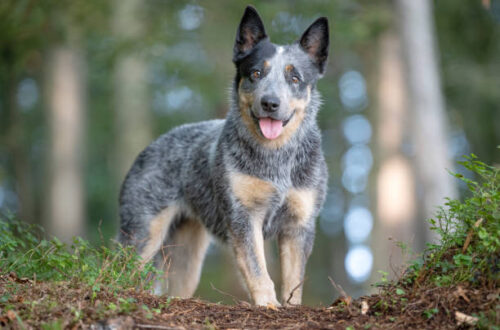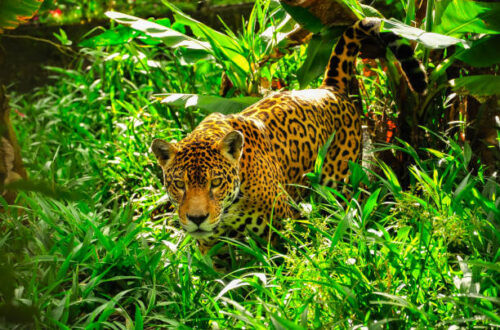The idea of training a potentially dangerous pet – a large reptile, a powerful feline, or even a primate – often conjures images from movies or sensationalized news stories. But beyond the spectacle, lies a challenging reality fraught with ethical considerations, safety hazards, and the fundamental question: Can you truly ensure a wild animal is “well-behaved” in a captive environment?
While the term “training” might be used, it’s crucial to understand that it differs significantly from training domesticated animals like dogs or cats. We’re not talking about teaching tricks or basic obedience; we’re often referring to management techniques aimed at minimizing risk and facilitating necessary care.
Understanding the Difference: Domestication vs. Taming
Before delving into the specifics, it’s vital to distinguish between domestication and taming:
- Domestication: This is a long-term evolutionary process spanning generations, where animals are selectively bred for specific traits that make them suitable for living with humans. Domesticated animals have undergone genetic changes that influence their behavior and temperament. Think of dogs, cats, and livestock.
- Taming: This involves habituating a wild animal to human presence. Through consistent interaction, an individual animal may become less fearful of its handler. However, taming does not alter the animal’s fundamental wild instincts.
Dangerous pets are, by definition, wild animals. While they may become accustomed to their keepers, their inherent instincts – the drive to hunt, defend themselves, or establish dominance – remain. This crucial distinction underscores the limitations and inherent risks associated with trying to “train” them in the same way we train domestic pets.
The Goals of “Training” Dangerous Pets: Risk Mitigation, Not Obedience
Instead of aiming for a perfectly obedient lion or a crocodile that fetches, the focus of managing dangerous pets is typically on:
- Reducing Aggression: Minimizing the likelihood of attacks or defensive behaviors towards humans.
- Facilitating Handling: Making it safer for keepers to provide care, such as feeding, cleaning enclosures, and administering medical treatment.
- Preventing Escape: Ensuring the animal remains securely within its enclosure.
- Basic Cooperation: Encouraging the animal to move to specific areas for feeding or enclosure maintenance.
These goals are often achieved through a combination of techniques that focus on the animal’s natural behaviors and motivations.
Techniques Used in Managing Dangerous Pets: A Delicate Balance
The methods employed to manage dangerous pets can vary depending on the species, the individual animal’s temperament, and the keeper’s experience. Some common approaches include:
- Positive Reinforcement: Rewarding desired behaviors (e.g., moving to a designated feeding area) with food or other positive stimuli. This can build trust and encourage cooperation.
- Negative Reinforcement (Avoidance): Removing an unpleasant stimulus when the animal performs the desired behavior. This should be used cautiously and ethically to avoid causing stress or fear.
- Target Training: Using a target (like a stick with a ball on the end) to guide the animal to specific locations. This is particularly useful for moving animals safely within their enclosures.
- Habituation: Gradually exposing the animal to human presence and routine care activities to reduce fear and anxiety.
- Environmental Enrichment: Providing a stimulating and species-appropriate environment can reduce stress and boredom, which can contribute to behavioral problems. This isn’t direct training but plays a crucial role in overall well-being and manageability.
- Operant Conditioning: A broader approach that involves associating specific behaviors with consequences (both positive and negative).
However, it’s critical to emphasize that these techniques are not foolproof and require a deep understanding of the animal’s behavior, physiology, and individual personality. What works for one animal may not work for another, and misinterpreting behavior can have dangerous consequences.
The Inherent Risks and Limitations of “Training” Wild Animals
Despite the best efforts of experienced keepers, there are inherent risks and limitations to managing dangerous pets:
- Unpredictability: Wild animals are driven by instinct and can react in unexpected ways, especially when stressed, ill, or feeling threatened.
- Size and Strength: Even a “well-behaved” large animal possesses the physical capability to cause serious injury or death unintentionally.
- Hormonal Fluctuations: Hormonal changes, particularly during breeding seasons, can significantly impact behavior and increase aggression.
- Learned Associations: While positive reinforcement can be effective, fear or negative associations can also be deeply ingrained and trigger unpredictable reactions.
- The “Wild Card” Factor: External stimuli or changes in the environment can trigger instinctive behaviors that override any learned responses.
Therefore, it is misleading to believe that a dangerous pet can ever be truly “safe” through training alone. Management techniques aim to reduce risk, but the fundamental wild nature of the animal remains.
Ethical Considerations in “Training” Dangerous Pets
The very act of “training” or managing a wild animal in captivity raises significant ethical questions:
- Animal Welfare: Are the training methods used causing stress, fear, or physical harm to the animal? Is the captive environment truly meeting its complex needs?
- Human Safety vs. Animal Freedom: Where do we draw the line between ensuring human safety and respecting the animal’s natural behaviors and autonomy?
- The Purpose of Captivity: Is the “training” solely for the convenience or entertainment of humans, or does it contribute to the animal’s well-being or conservation efforts (in rare, regulated cases)?
These ethical considerations should be at the forefront of any discussion about keeping and managing dangerous pets.
The Importance of Secure Housing and Expert Handling
Providing secure, proper housing is more important than “training.” Also, only experienced and knowledgeable people should handle these animals. Strong enclosures reduce escape risks. Skilled handling methods focus on safety for both people and animals.
Alternatives to Keeping Dangerous Pets: Respecting Wildlife from a Distance
For those fascinated by wild animals, there are numerous ethical and safe ways to appreciate them without the risks and responsibilities of private ownership:
- Visiting Accredited Zoos and Sanctuaries: These institutions often employ expert staff and focus on animal welfare and conservation.
- Supporting Wildlife Conservation Organizations: Contributing to the protection of animals in their natural habitats.
- Wildlife Photography and Observation: Engaging with animals in their natural environment from a safe distance.
- Documentaries and Educational Resources: Learning about the behavior and ecology of wild animals.
These options let you experience wildlife safely. They avoid the risks and ethical issues that come with owning dangerous pets.
FAQs: Addressing Your Questions About Managing Wild Animals
Here are some frequently asked questions about the challenges of managing dangerous pets:
Q: Can you use the same training methods for a lion as you would for a dog?
A: No. Domestic dogs have been selectively bred for thousands of years to cooperate with humans. Wild animals like lions have different motivations, instincts, and learning styles. Positive reinforcement can work well, but it must fit the species and the individual animal. Safety is also very important.
Q: How do zoos safely manage large predators?
A: Zoos have skilled staff who use secure enclosures and special handling methods. They often use barriers, target training, and positive reinforcement. These techniques rely on a strong understanding of animal behavior. Safety protocols are paramount.
Q: Is it ever truly safe to interact directly with a large, dangerous animal?
A: Direct interaction always carries a degree of risk. Even animals that appear calm can react unpredictably due to stress, illness, or instinct. To reduce these risks in professional settings, strict safety protocols and skilled handlers are key. It’s usually not safe for people to interact directly with large, dangerous animals without supervision.
Q: What are the signs that a “trained” wild animal might still be dangerous?
Changes in behavior, like aggression or withdrawal, can happen suddenly. So can hormonal shifts, illness, and new experiences. These factors can cause unpredictable reactions, even with past training.
Q: How does environmental enrichment help in managing dangerous pets?
A stimulating environment cuts boredom and stress. This reduction helps prevent aggression and other behavioral issues. Giving animals chances to act naturally, like climbing, digging, and exploring, helps their well-being. This also makes them easier to handle.
Q: What are the legal requirements for “training” or managing dangerous pets?
A: Regulations vary significantly by location. Some areas may have specific requirements for housing, handling, and even psychological well-being. It’s crucial to research and comply with all local, state/provincial, and national laws.
Q: Can “training” overcome an animal’s natural instincts?
A: No. Training can help manage some behaviors, but it can’t erase millions of years of evolution and deep instincts.
Q: What are the risks for untrained individuals attempting to handle dangerous pets?
A: The risks are severe and include serious injury, disease transmission, and even death. Untrained people don’t know how to safely handle these animals. This puts them and others in serious danger.
Conclusion: Proceed with Extreme Caution in the Realm of Wild Animal Management
The notion of “training” a dangerous pet to be completely well-behaved is largely a misconception. Management techniques can reduce risks and support care. However, the wild nature of these animals is still a major factor.
Prioritizing safety, ethical considerations, and respecting the fundamental instincts of wild animals should always be paramount. Housing needs to be secure. Experts should handle the animals. We must also understand the species well. It’s more important than trying to force wild animals to be “obedient” like pets.





